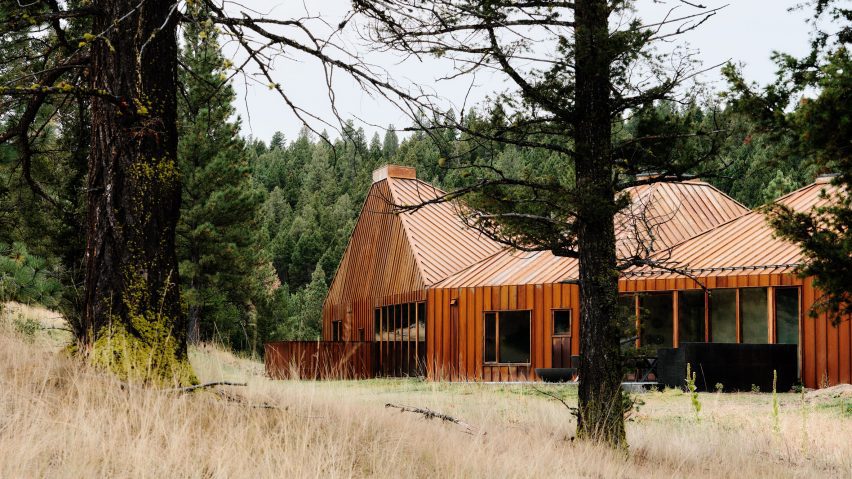
TW Ryan Architecture clads pyramidal Montana house in weathering steel
California studio TW Ryan Architecture has completed a wildfire-resistant house in the American West that features a Corten steel exterior and pyramidal roofs that allude to the mountainous terrain.
Located in a remote part of central Montana, the Four Roof House was designed for a couple who wanted a low-maintenance home where they could age in place.
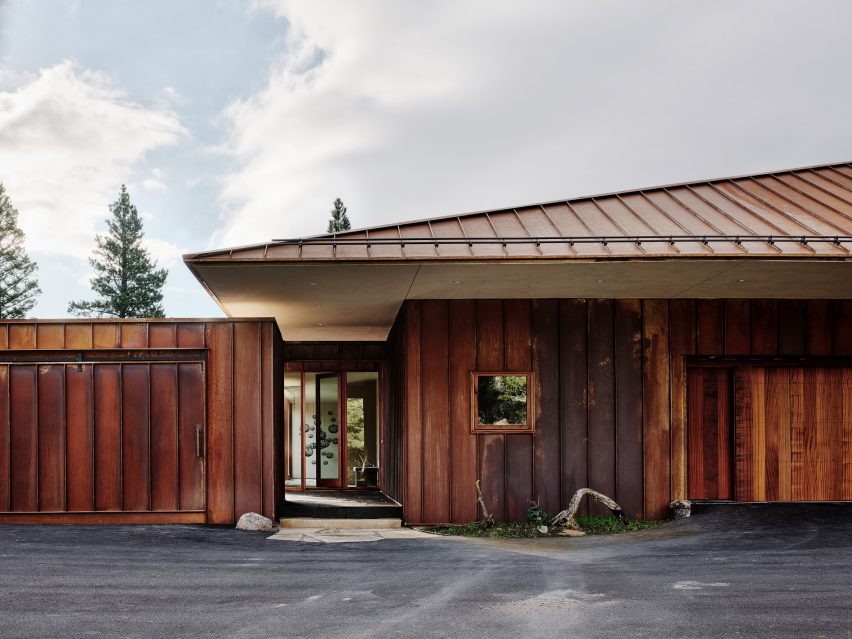
Their chosen site was a bluff overlooking a lake near the town of Helmville. The site came with challenges, such as fluctuating weather conditions and threats of wildfire.
"The micro-climate of the area is known for its harsh variability, including 30-degree temperature swings, wildfires and high snowfall, relived by summer months of wildflowers and abundant wildlife," said TW Ryan Architecture, which is based in northern California.
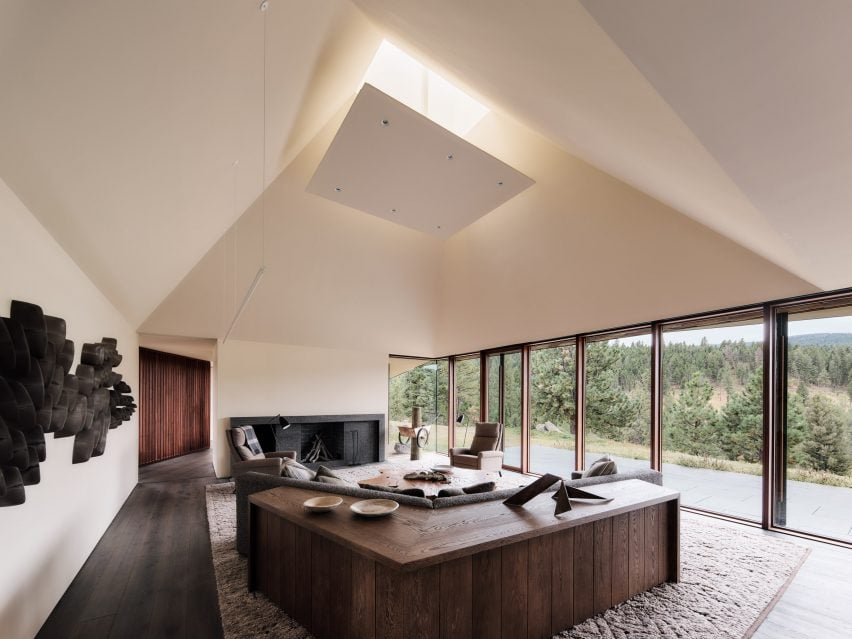
A key goal for the design team was to create a rugged home that could "withstand the ever-changing weather conditions, while reinforcing a refined engagement with the natural landscape of the unique site".
The team conceived a 5,000-square-foot (465-square-metre) dwelling that is sited in a way that prioritises solar orientation and views. One side of the home is set at an angle, adding a dynamic quality to the plan.
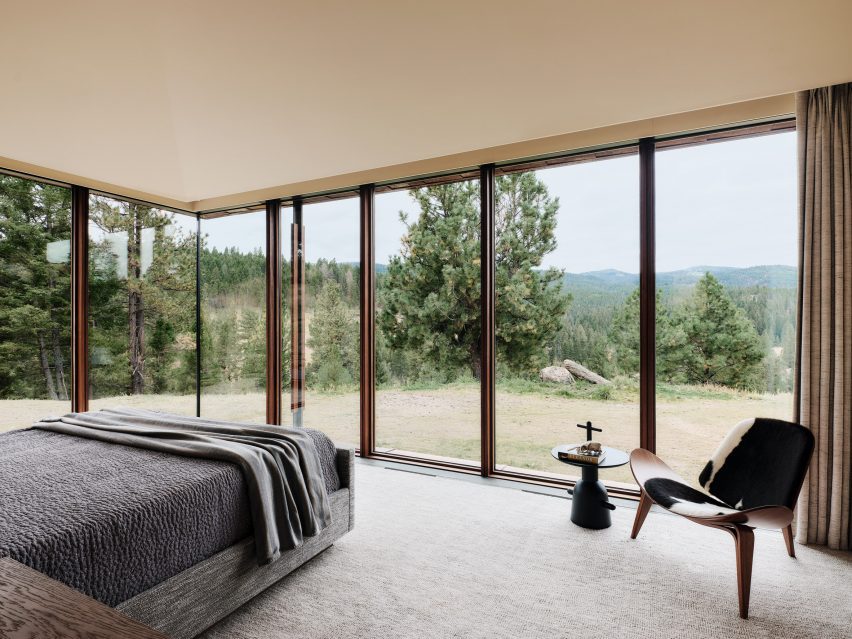
The house is topped with a series of pyramidal roofs that mimic the surrounding mountains.
"Inspired by the mountains of the Bob Marshall National Wilderness adjacent to the site, four tented roof peaks climb organically above a shifting floor plan below," the team said.
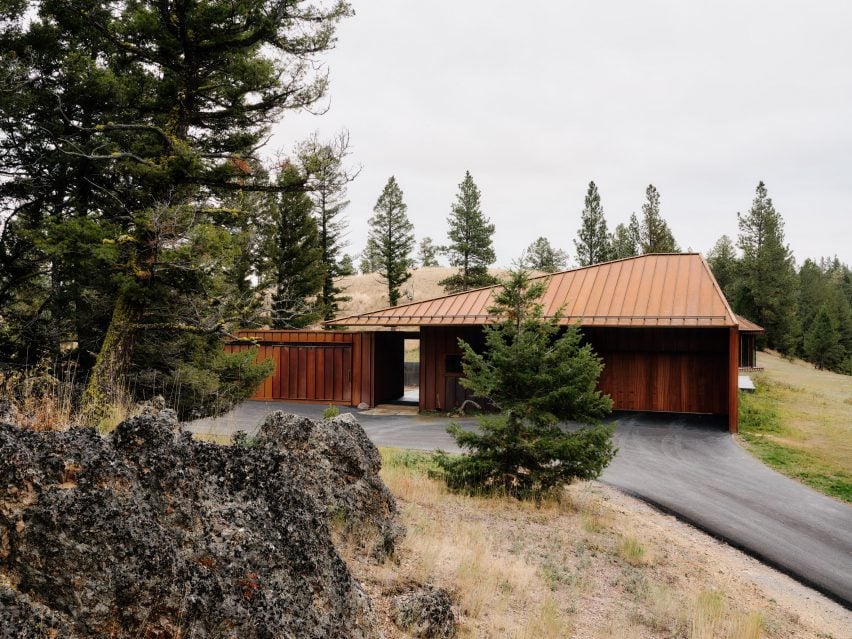
Large roof overhangs help shield the home from direct sunlight during warm months while still enabling solar penetration during the winter.
Both the walls and roofs are wrapped in standing-seam weathering steel with a natural patina.
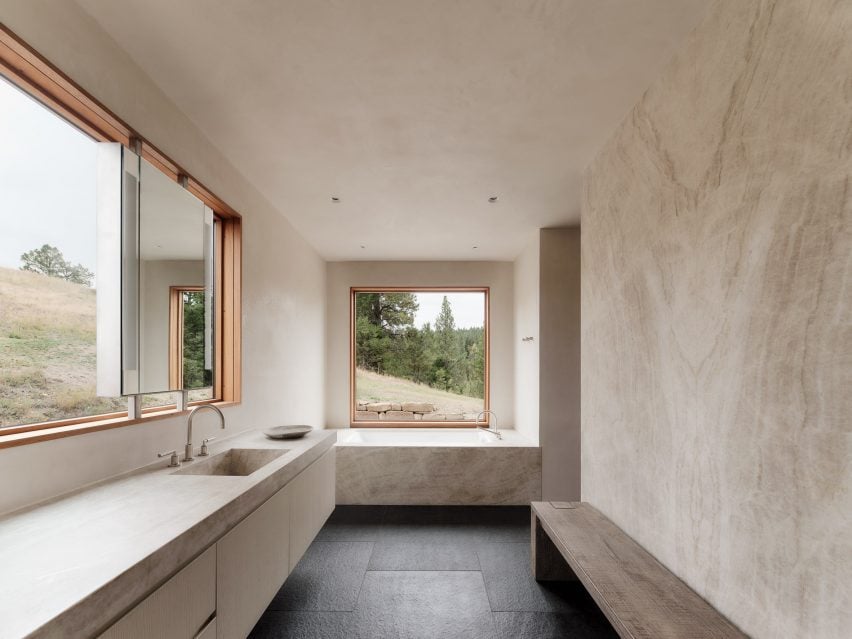
Over time, the steel cladding will provide visual continuity with the copper-rich rock outcroppings on the site. It also helps protect against wildfire.
"Corten steel not only registers the changing of seasons with its naturally forming patina, but also provides a protective shell from the wildfires often sparked by lightning strikes in the area," the team said.
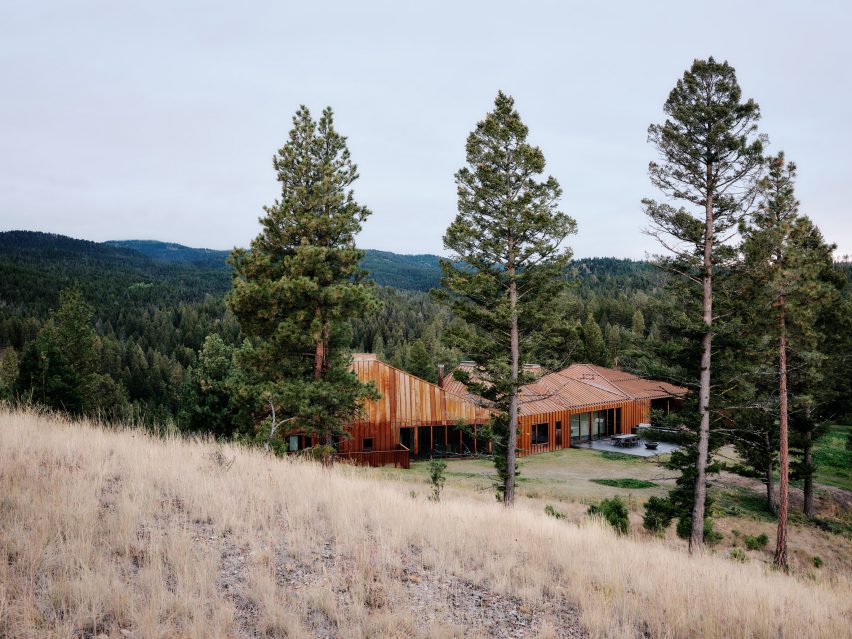
Within the dwelling, one finds bright rooms with earthy finishes such as oak and stone. A radiant system provides heat, and fresh air flows in through operable windows.
"Natural ventilation was incorporated into every inhabitable room, with all the primary public spaces having at least three operable windows to promote cross breezes," the team said.
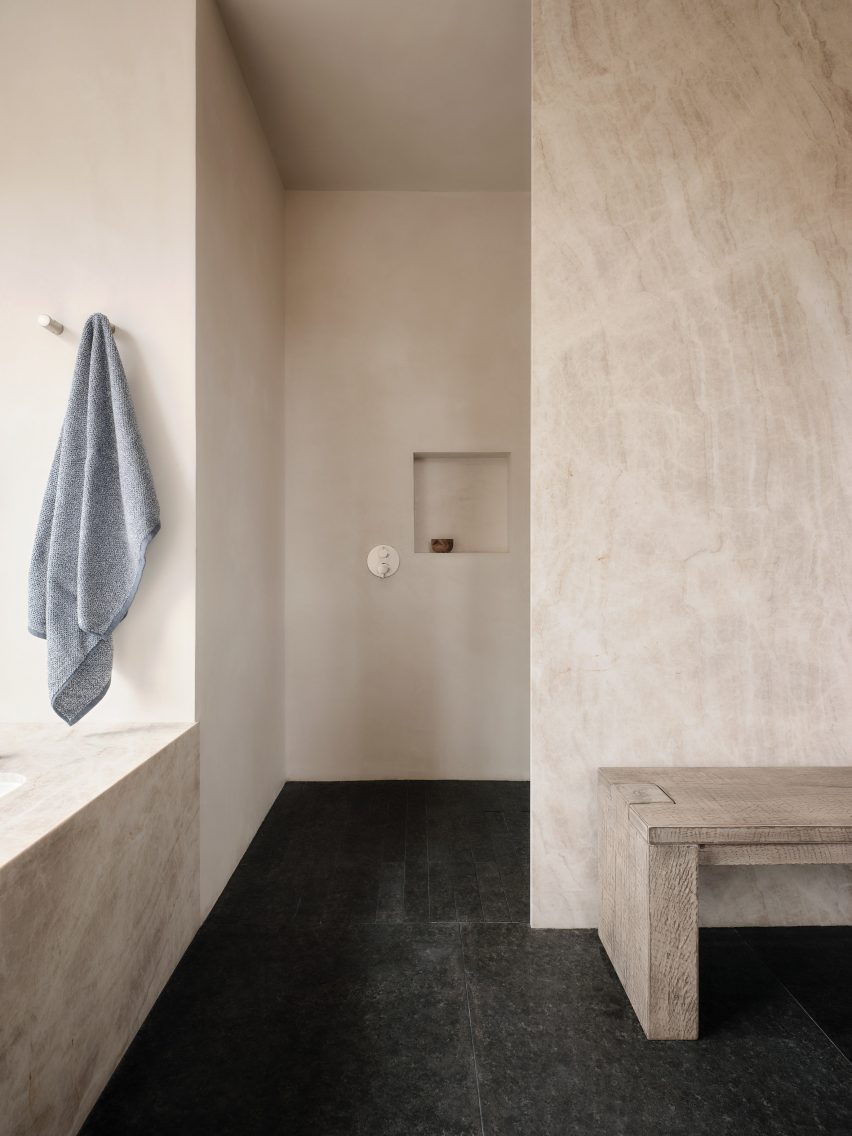
The entrance side, on the northwest, contains a mudroom and garage. This area leads toward the central portion of the dwelling, where one finds two bedrooms and the communal zone.
The offset, angled volume is on the southeast. It holds a primary bedroom suite, which includes a lounge and a dedicated outdoor space for dogs.
The heart of the house is the communal area, which features an open-plan kitchen, dining area and living room. A glazed wall and sliding door offer a seamless transition to an outdoor deck.
Two of the pyramidal roofs are set over the public area, and each is topped with a skylight that ushers in natural light. While the daylight is welcome, it needed to be carefully managed in order to protect the client's art collection from harmful UV rays.
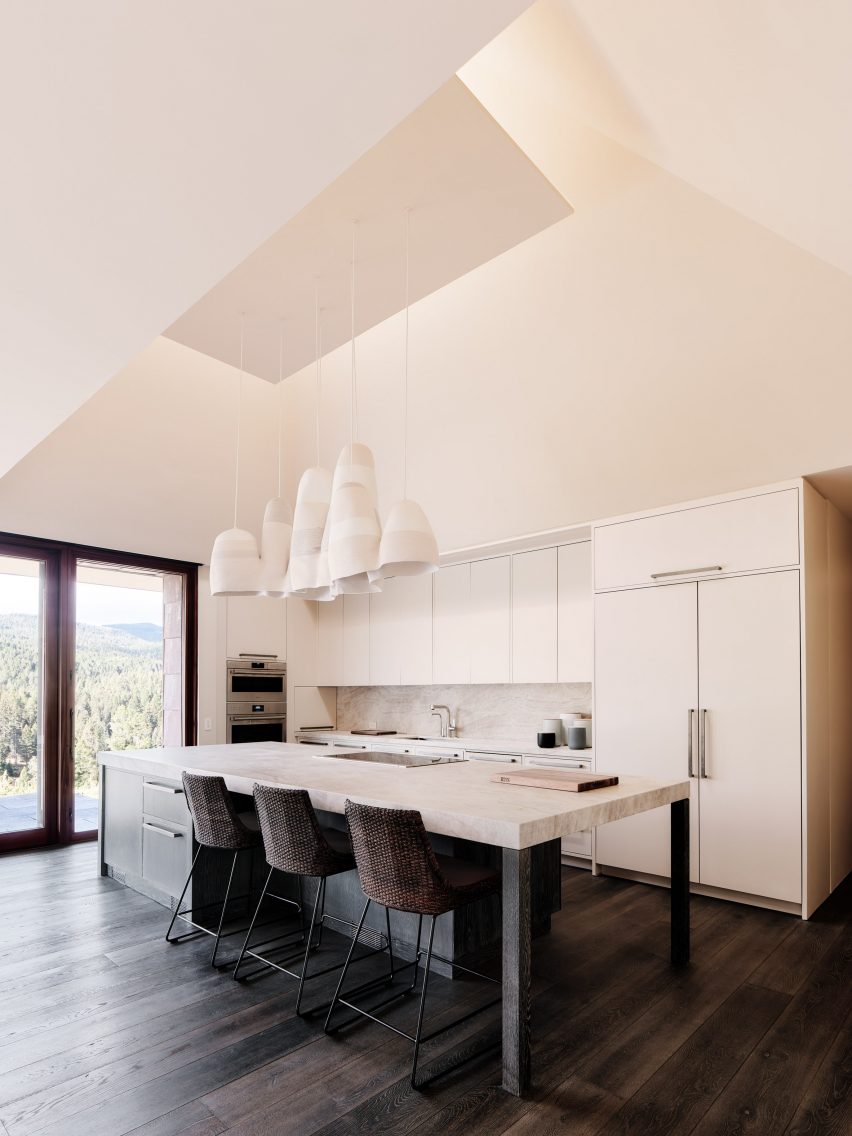
In response, the team created pyramid-shaped light reflectors that hang just below the vaulted ceilings. The idea for the reflectors was inspired by the wing-shaped light reflectors found inside Louis Kahn's Kimbell Art Museum.
"The surfaces of the vaulted ceilings are kept clean, emphasising their volume, while a pyramidal form reflects the sunlight back onto the ceiling vaults during the day – and uses integrated LED fixtures to simulate a similar natural lighting atmosphere at night," the team said.
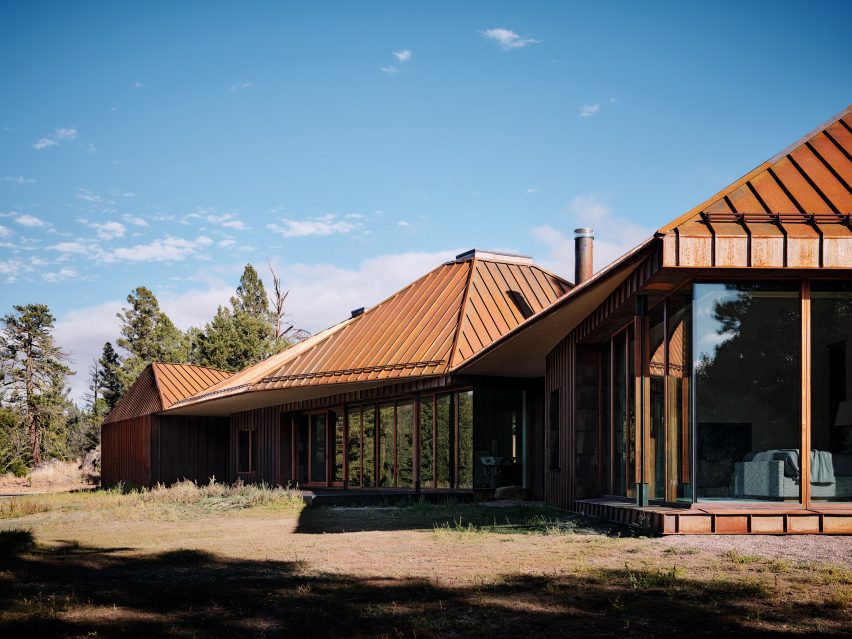
Beyond the house, the project also involved landscape interventions, such as planting native wildflowers and field grasses.
"As the client chose the location of the site for the beauty of its natural environment, maintaining and supporting this environment became a driving factor in the design," the team said.
Other projects in Montana include a cedar-clad home designed for the founders of Barkow Leibinger, which is square in plan and organised around a central courtyard, and a remote cabin by Andersson-Wise Architects that has cordwood walls and a living roof with tall grasses.
The photography is by Joe Fletcher.
Project credits:
Design architect and architect of record: T.W. Ryan Architecture
Architect project team: Thomas Ryan (principal), Luigi Grosso, (project manager)
Interior designer: Douglas Durkin Design
Interior design team: Douglas Durkin, Greg Elich, Niluka de Pinto
General contractor: Lohss Construction
Structural engineer: Salvetech Engineering
Mechanical engineer: Energy 1
Lighting: Ambiance